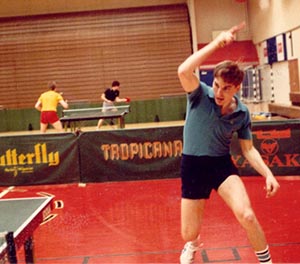Tip of the Week
Top Ten Ways to Win and Lose a Match. (As explained in my Dec. 28 blog in the Tip of the Week, I'm putting up extra Tips of the Week and post-dating them for earlier in December so I'll end up with 150 Tips for the period 2014-2016. So today's Tip of the Week is dated Dec. 31. This is the last one, so now we can finally celebrate the New Year!)
More Table Tennis Tips
I've spent much of the last few days formatting my next table tennis book, the creatively titled "More Table Tennis Tips." This has the 150 Tips of the Week I've written over the last three years, 2014-2016, but put together in logical progression. This is both a sequel and companion piece to my previous book, "Table Tennis Tips," which had the 150 Tips from 2011-2013. Both go with another of my books, "Table Tennis Tactics for Thinkers." (Yes, shameless book promotion!)
This tips in this volume range over nine basic topics: Serving, Receiving, Strokes, Footwork and Ready Position, Tactics, How to Improve, Sports Psychology, Equipment, and Tournaments. It's about 73,000 words, and will likely be about as many pages as its predecessor, which was 228.
I hope to finalize the pages today, then print out and proof over the next few days. Then I'll be contacting some of my regular proofers (some are learning about this for the first time as they read this!) to see if they are available for proofing. If all goes well, it'll be out perhaps by the end of the month.


 Photo by Donna Sakai
Photo by Donna Sakai


